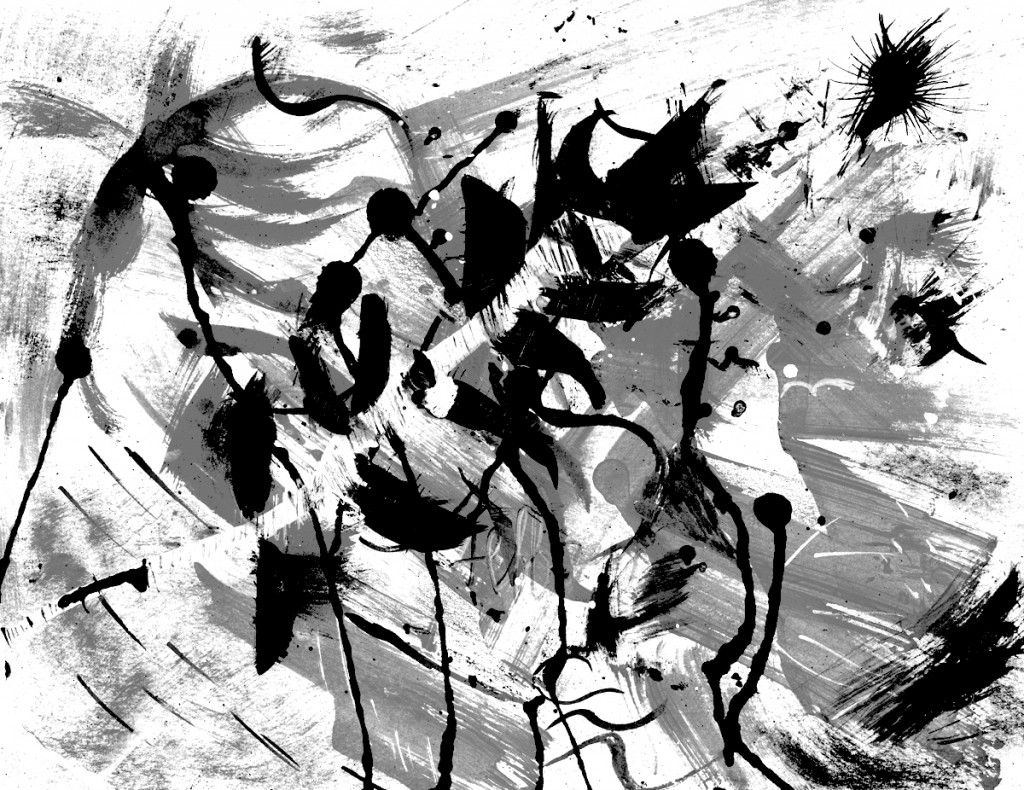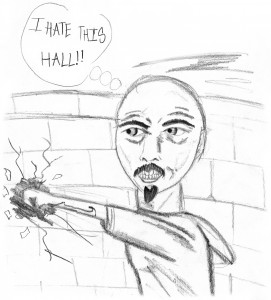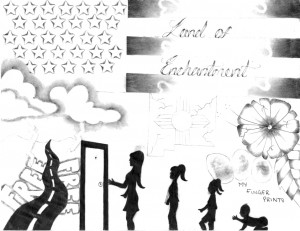
For the better part of the last two decades, The Beat Within has been committed to a mission of providing incarcerated youth with a forum where they can write (and draw) about the things that matter most to them, explore how they have lost connection with those things they value, and consider how they might re-connect to positive situations in their lives through the power of the written word.
This is a program that started small, in the Bay Area, with a commitment to provide detained kids between the ages of 11 to 18 with a safe space to share their ideas and experiences while promoting literacy, self-expression, some critical thinking skills, and healthy, supportive relationships with adults and their community.
 That modest local effort has grown into a nationwide program that touches the lives of more than 5,000 youth in detention. Today, you can find weekly Beat workshops going on in 12 California county juvenile halls, from Alameda to San Diego. We are partnering with universities from U.C. Berkeley to the University of Hawaii. Meanwhile, the workshop model for The Beat is being replicated in Arizona, Texas, Alabama, New Mexico, Hawaii, Oregon, Washington, D.C., and, thanks to the JJIE, Georgia.
That modest local effort has grown into a nationwide program that touches the lives of more than 5,000 youth in detention. Today, you can find weekly Beat workshops going on in 12 California county juvenile halls, from Alameda to San Diego. We are partnering with universities from U.C. Berkeley to the University of Hawaii. Meanwhile, the workshop model for The Beat is being replicated in Arizona, Texas, Alabama, New Mexico, Hawaii, Oregon, Washington, D.C., and, thanks to the JJIE, Georgia.
This is a broad program, one that is committed to providing aftercare for our youth and engagement and partnering with local community-based organizations that can provide job training, mentoring, peer-support, psycho-social support services, individual and group mental health counseling.
But it is the workshops that are the heart of what The Beat Within is all about. To encourage the kids to write and to draw, we begin with a conversation about issues affecting them and how they can make connections between their personal life and the larger community.
Our volunteers package up all of these writings and artwork and submit them for publication in The Beat’s bi-weekly magazine. Every kid who writes receives feedback on their work. When the issue comes out, well, even the young people who might have been suspicious and even hostile applaud when they listen to each other’s writings during the workshops, as well as when they are reading the many entries featured in each issue.
We encourage, through the power of the pencil and paper, for the writing and the art to come from the heart; and that they do!
During these difficult times, we want our contributors to use the art and writing as the light of hope and inspiration. Both channels are therapeutic, meditative, and provide a discipline.
Through art and writing, contributors find this forum as a safe place to reflect on their lives, their current state, as well as dream of a better future. Their work reveals the pride, the pain and insecurities, the fears, and the knowledge, that informs and gives us admirers of The Beat insight of what young people are truly dealing with at this moment in time.
 The power of this work reaches many. The admiration from fellow Beat readers and contributors from Georgia, to Washington, D.C., to San Francisco and everywhere in between, gives immense satisfaction and empowerment to these young people, who often have very little self-worth. And thanks to The Beat’s publication, we have created a powerful community and support for these young people.
The power of this work reaches many. The admiration from fellow Beat readers and contributors from Georgia, to Washington, D.C., to San Francisco and everywhere in between, gives immense satisfaction and empowerment to these young people, who often have very little self-worth. And thanks to The Beat’s publication, we have created a powerful community and support for these young people.
Often, we view The Beat Within publication as a history book of the week and a true resource guide. In this way, we learn from the direct source what is broken and needs to be addressed in the lives of our young contributors. That's empowering and powerful!
Through this process, The Beat seeks to reduce recidivism by providing youth with positive social means of expression as an alternative to violence and crime that lead them to their current situation. The Beat program does not pretend to solve the problems of youth violence in an economic recession where there are few jobs for young people, and virtually none for those who have left high school. But it can be a springboard for imagining new opportunities.
Programs to develop writing skills to advance a young person’s prospects are confined to the well educated or those judged to be more literate. Yet the Beat has found that the very act of writing (and drawing) improves the skills of those who may desire them the most, but lack opportunities to develop them.
 Beyond its core activities, The Beat Within collaborates on projects to place incarcerated youths’ voices into a public forum. Since 2010, The Crime Report (a criminal justice website of the John Jay College of Criminal Justice in NYC) features the writings from The Beat each month, and San Francisco State University produced a video on The Beat Within’s workshops and history. Also,The Beat has partnered the last two years with Southern Exposure (SoEx), which is a San Francisco nonprofit visual arts organization that supports emerging artists and youth in a dynamic environment in which they can develop and present new work and ideas.
Beyond its core activities, The Beat Within collaborates on projects to place incarcerated youths’ voices into a public forum. Since 2010, The Crime Report (a criminal justice website of the John Jay College of Criminal Justice in NYC) features the writings from The Beat each month, and San Francisco State University produced a video on The Beat Within’s workshops and history. Also,The Beat has partnered the last two years with Southern Exposure (SoEx), which is a San Francisco nonprofit visual arts organization that supports emerging artists and youth in a dynamic environment in which they can develop and present new work and ideas.
The SoEx Artists in Education Program and The Beat partnership provides youth with a consistent opportunity to share their artistic ideas and experiences in a safe space that encourages literacy and self-expression. SoEx offers artistic support through consistent weekly workshops in the San Francisco and Alameda County Juvenile Justice Center to build on acquired skills and ideas.
These young people in the San Francisco and Alameda County Juvenile Justice Centers make collaborative and individual artworks that are published in each issue of The Beat Within.

Excellent! This program sounds incredibly inspiring. How can we get involved in Georgia. I like the idea of this community that the Beat Within has created. I’d love to be a part of this work in our community here. Thank you JJIE for sharing this with us. I hope to read more from the Beat Within soon.